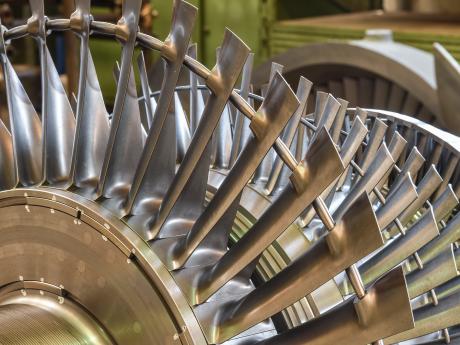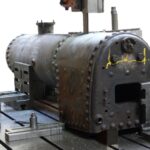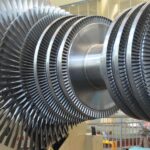Description of reaction turbine
It consists of a wheel or rotor, casing, fixed and moving blades. In this type, equal number of fixed and moving blades are attached alternately to the casing and the wheel respectively. The fixed blades is similar to a nozzle where velocity increases with decrease of pressure.
Working Principle
In reaction turbine, the steam is not expanded in the nozzle, but expands as it flows over the blades.

The steam passes over the fixed blade F. The fixed Blade changes the direction of steam and at the same time allows it expand to a higher velocity, with decrease of pressure.
Then the steam passes over the moving blade M. The moving blade converts the kinetic energy into mechanical work with decrease of velocity; but at the same time steam expands as it flows over the moving blade and there is a fall of pressure. This produces a reaction on the blades, by the expanding steam.
Thus in the reaction turbine the steam expands both in fixed and moving blades continuously as the steam passes over them. Therefore, the pressure drop occurs gradually and continuously over both fixed and moving blades. Parson turbine is an example of reaction turbine.


